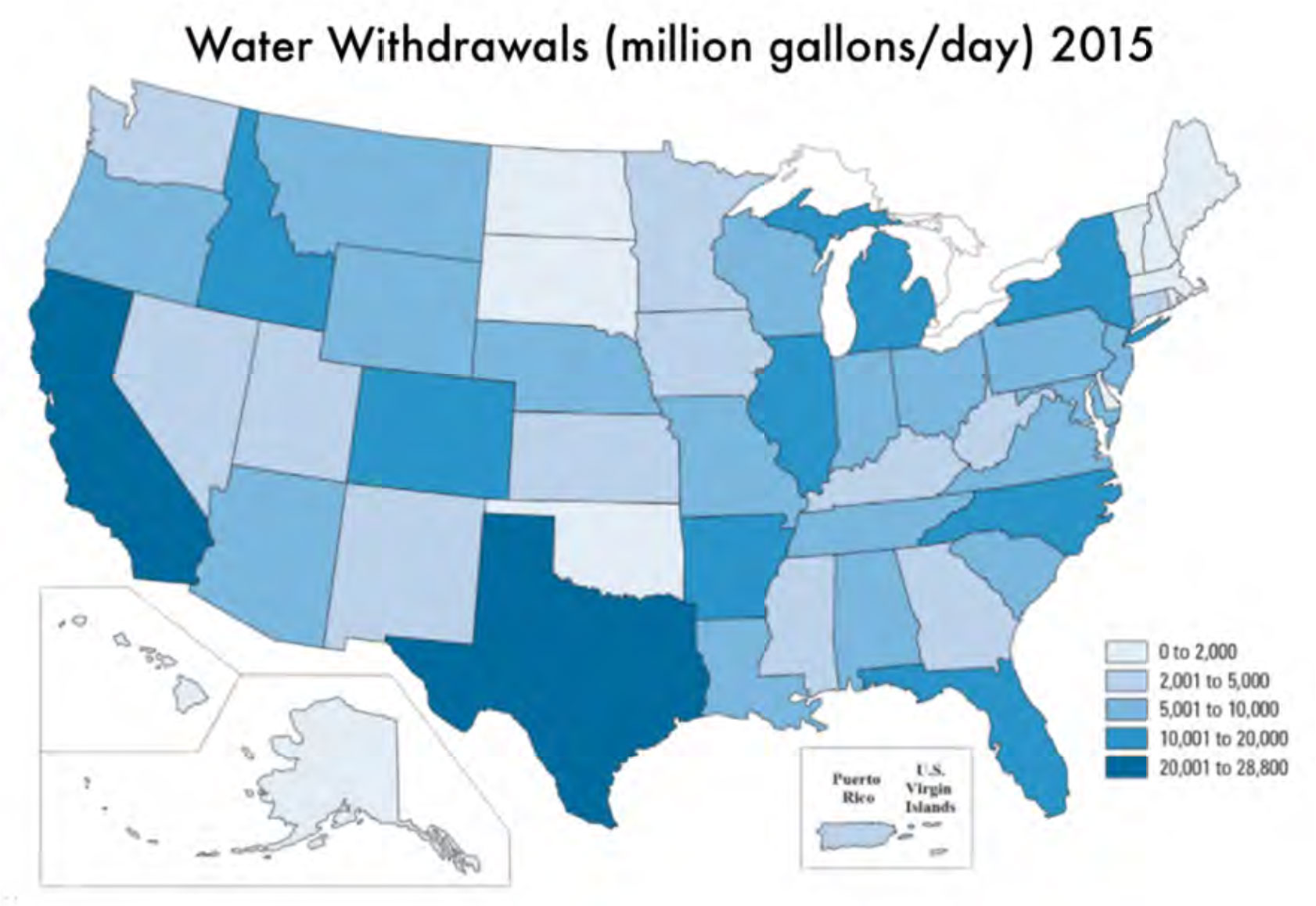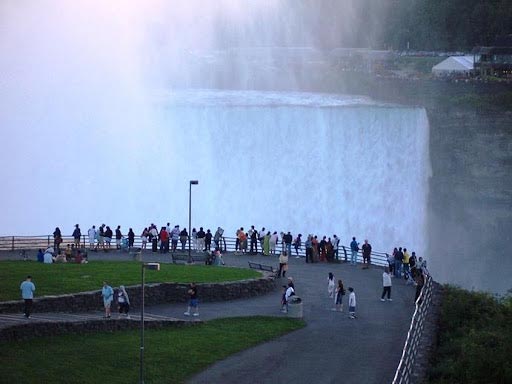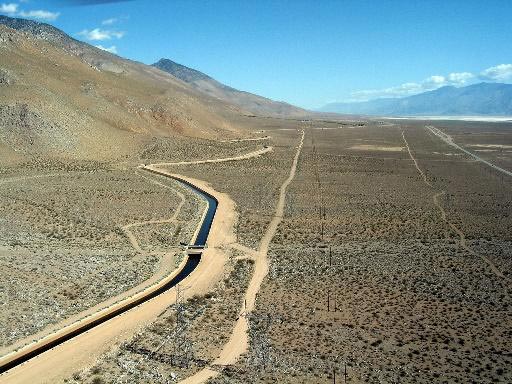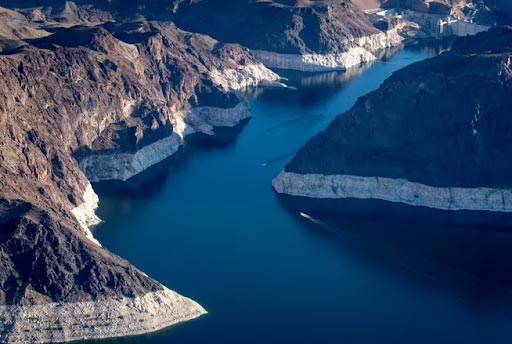Except for the American Southwest, including Colorado, the United States is comparatively well endowed with water resources. Thus, Americans use prodigious quantities of both surface water (withdrawn from man made reservoirs, natural lakes and rivers) and groundwater (pumped from subterranean aquifers) to supply agriculture, industry, and municipalities. About 80 percent of our water supply is from surface water sources and the remaining 20 percent from groundwater.
Each and every day on average, the United States withdraws about 400 billion gallons of water for all uses – more than a thousand gallons per person. This volume of water would fill over four million swimming pools or 5,000 Rose Bowls to the rim. Notably, the two states with the largest withdrawals are California and Texas, the two most populous states in the country.
The three largest categories of water withdrawals are for thermoelectric power (water is used as a coolant in both coal-fired and nuclear electrical generating stations), agricultural irrigation, and public supply, cumulatively accounting for 90 percent of the national total.
We use water to irrigate our crops, manufacture all manner of products ranging from steel to silicon chips and soft drinks, as well as to water our lawns. We use it to fill our cooking pots, wash away our wastes, and even to cool our thermal power plants. About 80 percent of water used in the U.S. is for agriculture, which is very water-intensive because crops (like all healthy plants) need it for photosynthesis and transpiration. All green plants require enormous amounts of water during the growing season; much of this water is transpired, that is, evaporated back to the atmosphere through pores in leaves called stomata.

Total Water Withdrawals by State in 2015
Source: U.S. Geological Survey and Dieter et al.
Aggregate water use (withdrawals) in the U.S. has actually decreased in recent decades. During this same period, the U.S. population has increased by tens of millions of inhabitants. This illustrates that the relationship between population size and growth and aggregate water consumption is not a simple linear one. Every added increment of population does not necessarily equal an added increment of water consumption. 1 unit of population + 1 unit of population ≠ 2 units of water use. But nor is it true that there is no correlation at all between aggregate population size and aggregate water withdrawals and consumptive use.
In addition to population size, economic structure and level of activity, water conservation, reuse and efficiency measures all have a bearing in determining total water use in a given area or jurisdiction. For example, Idaho actually ranks third nationally in total water withdrawals, in spite of its comparatively low population (ranked 39th of 50 states in population size), because of the high amount of water it uses to irrigate crops fed to human consumers or livestock in other states and other countries. (Some of this water withdrawn for agriculture is “consumptively used”, i.e., incorporated into crops or lost to evapotranspiration, and some of it drains back to watercourses as “return flows”, often carrying salts or contaminants.)
For a period of time, and with strong public commitment and political support, total water use can actually be reduced – or at least held constant – even with a growing U.S. population, as it has been in recent decades. However, the crucial point is that under these special circumstances, if the U.S. population were stable (non-growing), aggregate water consumption could be reduced even more, were the same commitments made to water conservation, reuse and efficiency, allowing still more water to remain in natural streams, rivers, and lakes – where it furnishes ecological benefits to habitat, wildlife, and society.
In natural settings, water performs valuable “ecosystem services and functions”. These functions not only include supporting aquatic biota (plants and animals, vertebrates and invertebrates), fisheries and wildlife (such as waterfowl, wading birds, and other water-dependent animals), but also commercial navigation, hydroelectric generation, recreation (e.g., boating, fishing, swimming), and even sight-seeing and tourism.
A prominent example of the latter is Niagara Falls. The Niagara River drains all of the Great Lakes except for Lake Ontario. The water that courses down the Niagara River and over its mighty waterfall is part of the huge St. Lawrence River Basin or watershed, one of the largest in North America. Since 1961, up to 375,000 gallons of water every second have been diverted from the Niagara River upstream of the falls into gigantic conduits or penstocks. The water flows downward by gravity and spins turbines and generators that convert its kinetic energy into clean, low-cost, renewable electric energy (hydroelectric power). The water left to flow down and over the Falls proper is a major tourist attraction.

Niagara Falls from the New York side
With regard to water, the American Southwest is a special case. It is much drier on average than the rest of the country, and in the 20th century, it was made inhabitable by tens of millions (roughly 50 million in 2020) of newcomers only through the invention and widespread availability of air conditioning and the extraordinary exploitation of its scarce surface water and groundwater resources. Snowmelt from the Rocky Mountains pouring into the Colorado River and the Rio Grande, as well as snowmelt in the Sierra Nevada flowing into the Central Valley and the Owens Valley, were effectively “re-plumbed” with a vast network of dams, reservoirs, aqueducts, pumps, and canals.

Los Angeles Aqueduct – it runs south through Owens Valley desert on its way to distant L.A.
Now the entire system – and the tens of millions who depend on it – is at risk of collapse as a result of a warming, drying climate reducing the amount of water available, and incessant population growth increasing the number of “straws” (or pipes and pumps) sucking on that diminishing pool of water. Growing demands are being placed on a shrinking resource.
The Colorado River’s flow, for example, has decreased by an estimated 20 percent over the past century. In June 2021, authorities announced that the water level in the Colorado River’s Lake Mead had dropped to the lowest it has been in 84 years, since 1937, when the reservoir was first filling up. Its volume is now at a mere 36% of its capacity when full, and its water level has dropped 143 feet since 2000, revealing a “bathtub ring”.

Lake Mead on the Colorado River – A “bathtub ring” is clearly visible around its perimeter as its water level drops to unprecedented depths
The federal government’s Fourth National Climate Assessment indicates that for the rest of this century and beyond, the Southwest will heat up, Rocky Mountains snowpacks will shrivel, and flowing streams will become trickles. The Assessment states unambiguously:
“Increases in temperature would also contribute to aridification (a potentially permanent change to a drier environment) in much of the Southwest, through increased evapotranspiration, lower soil moisture, reduced snow cover….These changes would tend to increase the duration and severity of droughts and generate an overall drier regional climate.”
From 1990 to 2000, the U.S. population grew by approximately 33 million (the highest single decadal growth in American history). By 2010, it grew by another 27 million, and during the decade just concluded (2010-2020), nearly another 23 million residents were added to the U.S. population, for a total of about 83 million new Americans in just the last 30 years. Over the coming eight decades until the end of this century, unless more restrictive immigration policies are enacted, the U.S. population will continue to grow by tens of millions to surpass 400 million by about 2050 or 2060 and approach or surpass 500 million – half a billion – by 2100. At the end of the century, the U.S. population may well still be growing rapidly with no peak in sight. These additional tens of millions of residents will also be consumers of resources and emitters of wastes; they will inevitably impose an additional demographic load on environmental resources – including water, in its many manifestations, such as wetlands (e.g., swamps, marshes, bogs, fens, riparian areas); estuaries, sounds and bays; beaches and coastal areas; groundwater and aquifers; contamination issues; aquatic habitat for wildlife and fisheries, and so forth.

Example of a Small Estuary. Two of the nation’s largest estuaries are Chesapeake Bay on the East Coast and Puget Sound on the West Coast

School of Chinook (king) Salmon Smolts. These juveniles, showing their vertical parr marks, migrate from freshwater to the ocean.
Effects on water resources from this population growth, development, and sprawl would vary region by region.
The 2014 U.S. National Climate Assessment divides the continental United States into six regions: Northeast, Southeast, Midwest, Great Plains, Southwest, and Northwest. Projected changes in precipitation due to anthropogenic climate change vary from region to region. Population projections also vary from region to region: in the contiguous 48 states, the fastest growing regions in recent decades, and also projected to grow the most rapidly in the foreseeable future, are the Southeast, Southwest, and Northwest, although portions of the so-called Great Plains states, especially Texas and Colorado, are also projected to add many millions of residents.
However, if water shortages predicted by current climate change models should come to pass, at least one of these demographic projections in particular may not be realistic – that for the Southwest. The 2014 National Climate Assessment states: “Snowpack and streamflow amounts are projected to decline in parts of the Southwest, decreasing surface water supply reliability for cities, agriculture, and ecosystems.”
The Southeast Region is also anticipated to experience water supply problems. One of the three key messages for the region in the 2014 National Climate Assessment is: “Decreased water availability, exacerbated by population growth and land-use change, will continue to increase competition for water and affect the region’s economy and unique ecosystems.”
“Increases in temperature would also contribute to aridification (a potentially permanent change to a drier environment) in much of the Southwest, through increased evapotranspiration, lower soil moisture, reduced snow cover….These changes would tend to increase the duration and severity of droughts and generate an overall drier regional climate.”
From 1990 to 2000, the U.S. population grew by approximately 33 million (the highest single decadal growth in American history). By 2010, it grew by another 27 million, and during the decade just concluded (2010-2020), nearly another 23 million residents were added to the U.S. population, for a total of about 83 million new Americans in just the last 30 years. Over the coming eight decades until the end of this century, unless more restrictive immigration policies are enacted, the U.S. population will continue to grow by tens of millions to surpass 400 million by about 2050 or 2060 and approach or surpass 500 million – half a billion – by 2100. At the end of the century, the U.S. population may well still be growing rapidly with no peak in sight. These additional tens of millions of residents will also be consumers of resources and emitters of wastes; they will inevitably impose an additional demographic load on environmental resources – including water, in its many manifestations, such as wetlands (e.g., swamps, marshes, bogs, fens, riparian areas); estuaries, sounds and bays; beaches and coastal areas; groundwater and aquifers; contamination issues; aquatic habitat for wildlife and fisheries, and so forth.

Downward Trend in Water Availability in the Southeast Region
While changes in projected precipitation for this region are highly uncertain, the reasonable expectation is that there will be reduced water availability due to the increased evaporative losses resulting from rising temperatures alone.
A 2016 Environmental Impact Statement (EIS) prepared by Progressives for Immigration Reform, concluded this about the impacts of business-as-usual U.S. population growth trends on water resources:
“Overall, the net effect of the No Action Alternative on water demands and withdrawals from natural systems would be adverse, significant, and long-term. The degree of severity of this effect would vary from region to region, with impacts in the Southwest and Southeast being the most severe and other regions less so. While water-saving practices and technologies could to an appreciable extent ameliorate the adverse effects on water resources of adding 215 million more Americans [by the year 2100], they would not entirely eliminate them. If population were not growing so robustly, then savings from widespread implementation of water conservation and efficiency would allow more water to be retained in rather than withdrawn from aquatic ecosystems. This in turn would benefit the flora and fauna of these natural systems as well as restoring and enhancing the diminished levels of ecosystem services they currently furnish to society.”
A still more recent study investigating the likelihood of water shortages over the rest of the 21st century in 204 watersheds in the contiguous United States concluded that:
“Population growth and climate change will combine to pose substantial challenges for water management in the United States. Projections of water supply and demand over the 21st century show that in the absence of further adaptation efforts, serious water shortages are likely in some regions.”
The study noted that ongoing improvements in water use efficiency are likely to continue, but that these will not be enough to avoid future shortages. It will be necessary to divert potentially substantial amounts of water away agricultural irrigation, compromising the productivity of our irrigated farmlands (i.e., reducing yields or crop output per acre).